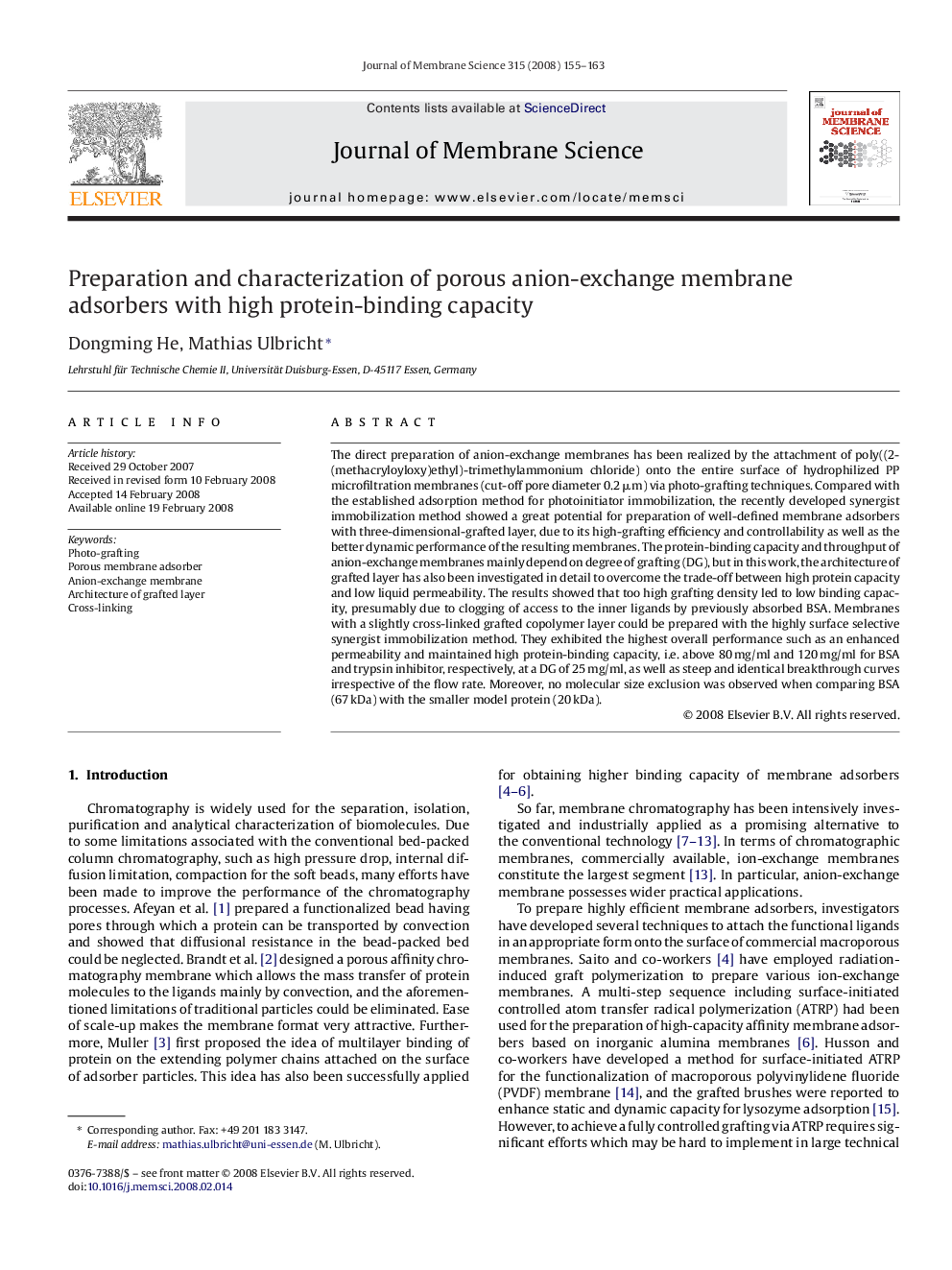| Article ID | Journal | Published Year | Pages | File Type |
|---|---|---|---|---|
| 637993 | Journal of Membrane Science | 2008 | 9 Pages |
Abstract
The direct preparation of anion-exchange membranes has been realized by the attachment of poly((2-(methacryloyloxy)ethyl)-trimethylammonium chloride) onto the entire surface of hydrophilized PP microfiltration membranes (cut-off pore diameter 0.2 μm) via photo-grafting techniques. Compared with the established adsorption method for photoinitiator immobilization, the recently developed synergist immobilization method showed a great potential for preparation of well-defined membrane adsorbers with three-dimensional-grafted layer, due to its high-grafting efficiency and controllability as well as the better dynamic performance of the resulting membranes. The protein-binding capacity and throughput of anion-exchange membranes mainly depend on degree of grafting (DG), but in this work, the architecture of grafted layer has also been investigated in detail to overcome the trade-off between high protein capacity and low liquid permeability. The results showed that too high grafting density led to low binding capacity, presumably due to clogging of access to the inner ligands by previously absorbed BSA. Membranes with a slightly cross-linked grafted copolymer layer could be prepared with the highly surface selective synergist immobilization method. They exhibited the highest overall performance such as an enhanced permeability and maintained high protein-binding capacity, i.e. above 80 mg/ml and 120 mg/ml for BSA and trypsin inhibitor, respectively, at a DG of 25 mg/ml, as well as steep and identical breakthrough curves irrespective of the flow rate. Moreover, no molecular size exclusion was observed when comparing BSA (67 kDa) with the smaller model protein (20 kDa).
Related Topics
Physical Sciences and Engineering
Chemical Engineering
Filtration and Separation
Authors
Dongming He, Mathias Ulbricht,
